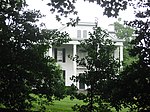Lunken Airport

Cincinnati Municipal Airport – Lunken Field (Cincinnati Municipal Lunken Airport) (IATA: LUK, ICAO: KLUK, FAA LID: LUK) is a public airport in Cincinnati, Ohio, three miles (5 km) east of Downtown Cincinnati. It is owned by the city of Cincinnati and serves private aircraft and the fleets of local corporations. It serves a few commercial flights and is the second-largest airport serving Cincinnati after Cincinnati/Northern Kentucky International Airport which is the area’s primary airport. It is known as Lunken Airport or Lunken Field, after Eshelby Lunken. It is bounded by US Route 50 (historic Columbia Parkway and Eastern Avenue) to the west, US Route 52 (Kellogg Avenue) and the Ohio River to the south, the Little Miami River (which originally flowed through the airfield but was diverted) to the east, and Ohio Route 125 (Beechmont Avenue) to the north. The airport is headquarters and hub for Cincinnati-based public charter airline Ultimate Air Shuttle, serving 5 destinations in the eastern United States with 16 peak daily flights. Lunken is also home to small charter airline Flamingo Air and its aviation school.
Excerpt from the Wikipedia article Lunken Airport (License: CC BY-SA 3.0, Authors, Images).Lunken Airport
Wilmer Avenue, Cincinnati Linwood
Geographical coordinates (GPS) Address External links Nearby Places Show on map
Geographical coordinates (GPS)
| Latitude | Longitude |
|---|---|
| N 39.103333333333 ° | E -84.418611111111 ° |
Address
Cincinnati Municipal Airport – Lunken Field (Cincinnati Municipal Lunken Airport)
Wilmer Avenue 262
45226 Cincinnati, Linwood
Ohio, United States
Open on Google Maps









